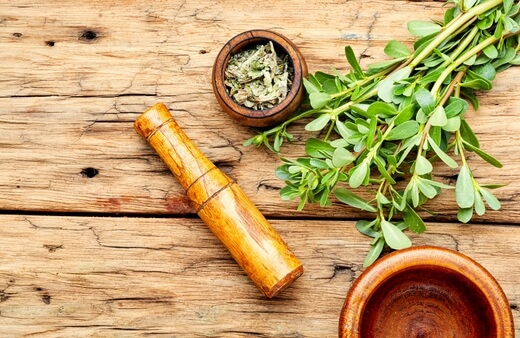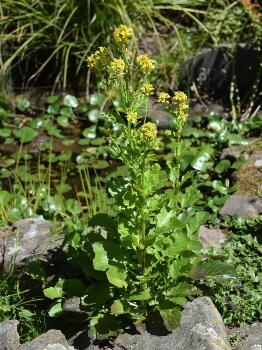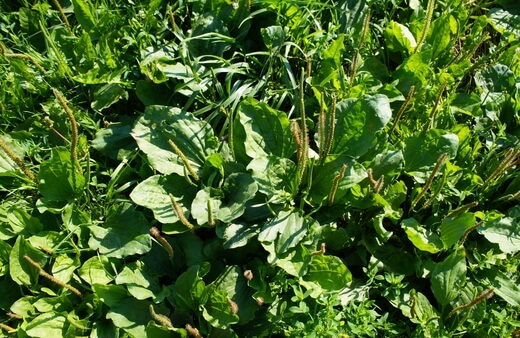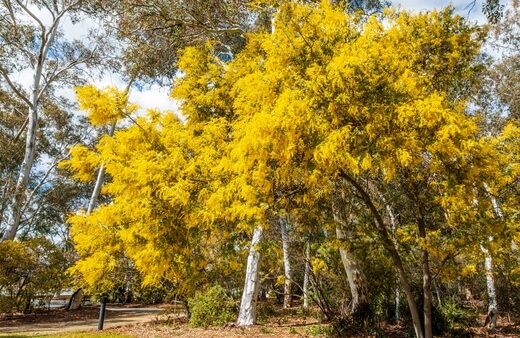I’m a firm believer that weeds are just plants that have found themselves in the wrong place. They might spread aggressively, and even make other aspects of gardening harder, but that doesn’t mean they are without their merits.
Many native Australian weeds are actually edible weeds, and not just safe to eat, but truly delicious.
In this guide, we’ll share some information about what you can eat, how to prepare it, and even how to grow it (if you’re brave enough, and dedicated enough to stay on top of deadheading and prevent its spread).
More...
What are Native Weeds?

Native weeds, as opposed to non-native weeds, just means weeds that are naturally occurring in Australia and have not been imported through trade, shipping, or the horticultural trade.
Most species of dandelion, for example, are edible, but they are not actually native to Australia (in fact, just two of the hundreds of Dandelion species are native to our shores). In this guide, we’ll be looking mostly at annual weeds, but there are some biennial and perennial weeds we’ll look at too.
The reason annual weeds are better suited for culinary use is that they tend to have cleaner and crisper foliage, which makes for better salad leaves – though there are some fascinating tree species whose leaves are edible, and taste deliciously nutty when wilted down like spinach.
10 Edible Weeds in Australia
1. Native Wintercress (Barbarea australis)

Source: iNaturalist
Native Wintercrass is a member of the brassica family, with a slightly sweet flavour. This edible weed's seeds can be used once dried and ground to add a subtle mustard-like flavour to any dish. While it is only common in Tasmania, it can be cultivated all over the world, and should not be picked from the wild as it is endangered.
- Where to find it: Tasmania, and cool riverbanks in southern Australia
- How to use it: Leaves, stems, flowers, and seeds are all edible, raw, cooked, or dried
- Can you grow it at home: Yes, and it doesn’t spread too quickly
2. Wild Parsnip (Trachymene incisa)

Source: survival.ark.net.au
Wild parsnip is another brassica, with gorgeously delicate young leaves that can be used raw as the base of a salad, but all parts of the plant are edible. Depending on the time of year you harvest wild turnip leaves, they can be subtly cabbage-flavoured, or really quite spicy.
- Where to find it: Western Australia
- How to use it: Use young leaves in salad, or wild older leaves.
- Can you grow it at home: Yes, but it is hard to control
3. Mountain Dandelion (Taraxacum aristum)

Source: Lucid Apps
Mountain dandelion is one of just two native true dandelions in Australia, and the more common ‘False Dandelion’ is not actually native, and can become invasive if planted in the wrong place. Mountain Dandelion is much easier to grow and be controlled simply by deadheading.
- Where to find it: New South Wales, Victoria, Tasmania
- How to use it: Eat the leaves and flowers raw in salads, or wilt older leaves like spinach
- Can you grow it at home: Yes, and it can be controlled by regular deadheading, or growing in cloches
4. Coast Dandelion (Taraxacum cygnorum)
Dandelion leaves have a gorgeous flavour and texture, similar to butterhead lettuce. They carry dressings really well too, so serving them up doesn’t feel like foraged food, and can actually be quite luxurious.


Get Your Free Guide:
Master Growing Australian Natives eBook
A Must Have Complete Guide for Every Australian Garden
Get Your Free Guide:
Master Growing Australian Natives eBook
A Must Have Complete Guide for Every Australian Garden
- Where to find it: South West Australia
- How to use it: Eat the leaves and flowers raw in salads, or wilt older leaves like spinach
- Can you grow it at home: Yes, and it can be controlled by regular deadheading, or growing in cloches
5. Stinging Nettles (Urtica incisa)

Source: Yarra Ranges Council
Stinging nettles, despite the pain they cause when raw, are actually a delicious food crop. Traditional nettle soup is packed with antioxidants, and while the flavour isn’t for everyone, it’s readily available and can be picked safely for any clean environment for use in the kitchen.
- Where to find it: South Eastern Australia, but prevalent everywhere
- How to use it: Steam or wilt nettles to stop them from stinging
- Can you grow it at home: Yes, but it spreads by root and seed, so is best grown in pots
6. Least Yellow Sorrel (Oxalis exilis)
Every part of these crawling ground-cover plants is edible, from the leaves and flowers to the seeds and even stems. Sorrell’s slightly bitter flavour works well to cut through sweet dressings and works just as well cooked as it does raw.
While wood sorrel can self-seed around the garden, it’s a lovely native ground cover plant to add to any low-level planting scheme too.
- Where to find it: All over Australia, particularly on hillsides, and well-drained sites
- How to use it: Can be dried in tea, blitzed into soups, or eaten raw in salads
- Can you grow it at home: Yes, but it does spread and can pop up anywhere in the garden from seed
7. Purslane (Portulaca oleracea)

Personally, I’m not a fan of the texture of purslane, so I always cook it into soups to add a slightly tart but fresh flavour to herby summer dishes. However, it can be used raw in salads, but the slightly succulent leaves are an acquired taste.
- Where to find it: Grows all over Australia
- How to use it: Young leaves can be eaten raw, and mature foliage is beautifully tender when cooked
- Can you grow it at home: Yes, and while it can be thuggish, it is easy to divide and thin out in borders if it gets out of control
8. Plantain (Plantago major)

Plantains – not to be confused with the Plantains in the banana family, are perennial plants that spread by seed very well through lawns and open land, covering over their competition. With that said, once cooked down, they make a great alternative to spinach or savoy cabbage as a firmly textured leafy green.
- Where to find it: In all parts of Australia
- How to use it: Leaves can be eaten raw or cooked, but are best cooked to tenderise their fibres
- Can you grow it at home: Yes, but keep it away from lawns
9. Sheep Sorrel (Rumex acetosella)

The tart citrusy leaves of sheep sorrel, plus its relatively simple growing requirements make it a great culinary weed to grow at home. However, you will need to regularly deadhead and remove seed heads to stop them from spreading all over the garden!
- Where to find it: Available all over Australia, but most common in cooler regions
- How to use it: Beautiful citrus flavoured leaves in salads
- Can you grow it at home: Can be grown at home, but it spreads rapidly by seed.
10. Golden Wattle (Acacia pycnantha)

Remember, not all edible Australian weeds are at ground level. There are many edible species of wattle that will readily spread like weeds all over the garden, and at the side of roads or in open land. Make sure you’re using the right types of wattle to harvest seed from though.
- Where to find it: South East Australia
- How to use it: Seeds are edible and widely used as a spice when dried
- Can you grow it at home: Yes; these short-lived trees are easy to control but should be grown at least 10m from structures.
Here is our Golden Wattle Australian native guide for more info.
Edible Weeds Frequently Asked Questions
What weeds are edible in Western Australia?
Dock, amaranthus and warrigal greens are all edible and commonplace around Western Australia. Remember, not all edible weeds are necessarily native, and many species of brassica and amaranth spread well in Australia.
What can you forage in Australia?
You can forage much more than weeds in Australia, and there are loads of edible plants growing wild that make excellent food sources. Finger limes and macadamias provide bulky crops at the right time of year.
Who should not eat purslane?
Anybody with kidney disease or high uric acid should steer clear of purslane, especially foraged purslane. Purslane is also not proven as being safe for pregnant or breastfeeding women.
What non-native weeds are edible?
Some of the best edible non-native weeds include wild carrot, wild fennel, and blackberries. They have all been imported from Europe, and while they are invasive, do not tend to have a damaging effect on local wildlife or ecosystems. They can be grown in gardens, or harvested from public spaces.
What native weeds have medicinal uses?
Plantain, ground ivy, and wood sorrel all have various medicinal properties, but pretty much every leafy weed you can eat will be packed with vitamins and minerals that are good for you.
What weeds are good for pain?
Nettles, or stinging nettles, are great weeds to grow or harvest from the wild. They are commonplace and not endangered, so can be harvested from anywhere. Once cooked they help to provide pain relief and add antioxidants and antimicrobial support into your diet.
Is chickweed good for your skin?
Chickweed is not just good to eat, it can be used as a topical treatment to relieve symptoms of eczema and psoriasis too.
Grow Your Own Edible Weeds at Home
Harvesting your own native Australian weeds is fun, free, and healthy, but make sure you’re familiar with each species before you go out foraging, and there are many non-edible species in the same genus as some of the plants above, and some herbaceous weeds that are toxic.
If you’re not a confident forager, find seeds and grow your own edible weeds at home. With the right considerations and some clever design, you can create a beautiful garden with edible weeds that are full of flavour as well as being low maintenance.
Published on March 27, 2023 by Lorri Hopkins
Last Updated on September 20, 2025






